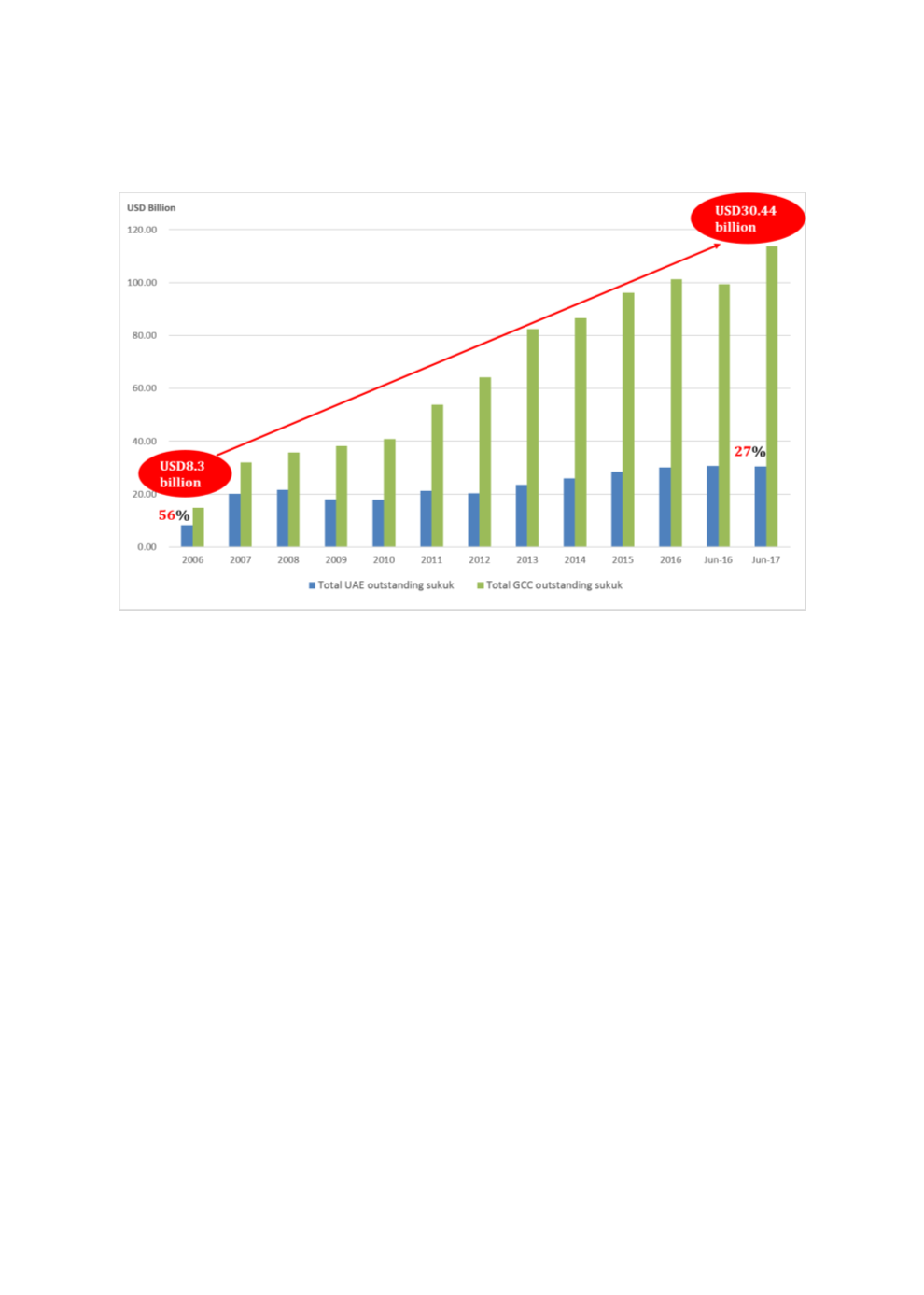

101
Chart 4.21: UAE vs GCC Total Outstanding Sukuk (2006-June 2017)
Source: Bloomberg
The growth of the bond market in the UAE has been predominantly led by USD-denominated
issues due to the pegging of the dirham (AED) against the USD, the influence of global investor
sentiment, and the various benefits offered by the DIFC to firms and institutions, such as zero
tax on profits, no restriction on foreign exchange, and double-taxation treaties. The advantages
of issuing USD-denominated bonds and sukuk for UAE entities include the following:
No currency risk as the AED is pegged to the USD at 3.70.
Low interest rates, hence reducing borrowing cost.
Enhances the liquidity of bond markets.
Nonetheless, overdependence on external funding also poses some challenges, which will be
discussed later.
Domestic Market – Public Sector Issuance
According to the IMF Report (2017), the UAE has very minimal domestic government debt
because large fiscal surpluses during the oil price boom had weakened the incentive for the
government to issue domestic debt. Emirati governments issue external debt (i.e. FCY bonds
and sukuk) or tap sovereign wealth funds (SWFs) to finance budget deficits. Up to June 2017,
only 3 emirates had issued sukuk, i.e. Dubai, Ras al Khaimah and Sharjah (only 2 issues had
been in AED while the rest were in USD); the Abu Dhabi government had only raised
conventional bonds. The peak of sovereign sukuk issuance occurred in 2009, with the Dubai
government leading the UAE market. The high-profile sukuk defaults of Dubai’s GREs in 2009
triggered a slump in the UAE sukuk market in 2010. Investors’ perception of Dubai credit had,
however, improved by 2012, leading the Dubai government to issue a 10-year benchmark-
















